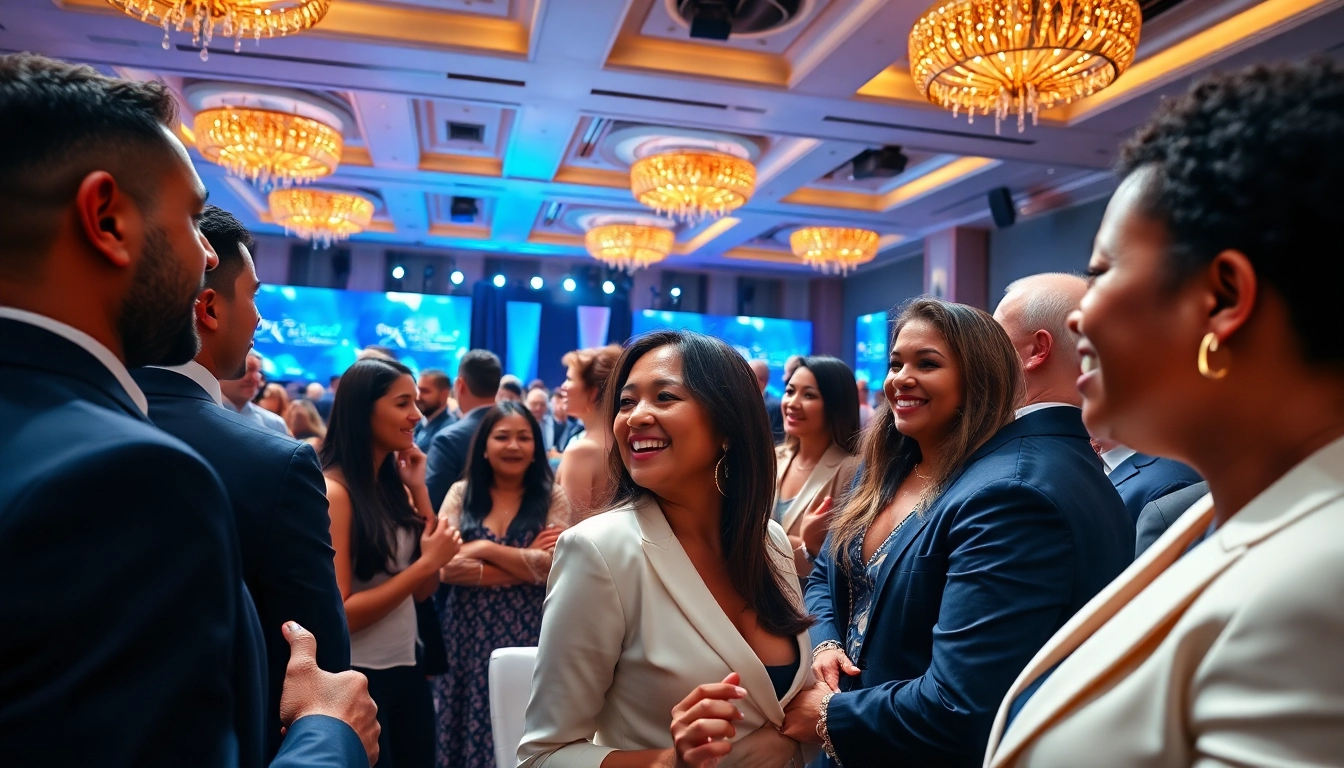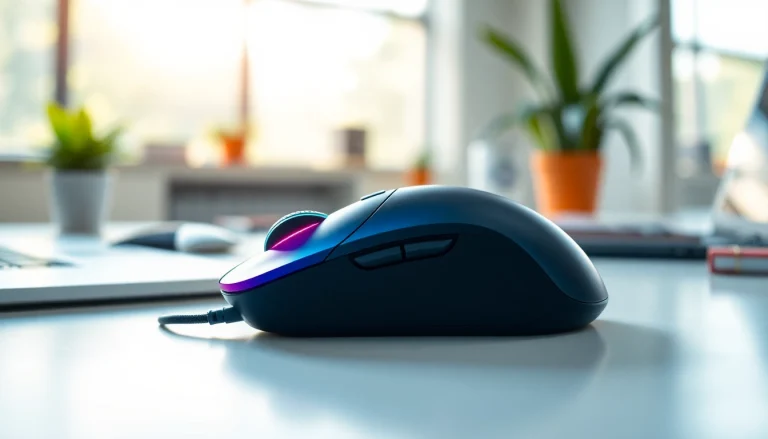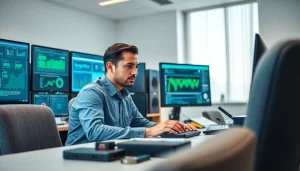Understanding Miami Corporate Event Videography Photography
In the bustling city of Miami, corporate events are not just gatherings; they are opportunities for brands to showcase their identity, engage with clients, and establish a lasting impact. The art of capturing these moments through Miami Corporate Event Videography Photography is essential for creating a memorable visual narrative. This article delves into the nuances of corporate event videography and photography specific to Miami, highlighting key strategies, techniques, and considerations for successful coverage.
Defining Corporate Event Videography Photography
Corporate event videography and photography encompass the professional documentation of corporate functions, including conferences, trade shows, networking events, and product launches. This form of visual storytelling serves multiple purposes: providing a record of the occasion, creating promotional materials, and generating content for social media platforms. The primary goal is to capture the essence of the event, from the ambiance to individual interactions, delivering a comprehensive view that resonates with the audience.
Key Elements of Successful Event Coverage
A successful coverage of corporate events relies heavily on several elements:
- Preparation: Thoroughly understanding the event agenda and goals is paramount. This enables the photographer and videographer to plan their approach, anticipate key moments, and ensure they are well positioned to capture significant interactions.
- Storytelling: Effective event coverage should narrate a story. It involves capturing the reactions of guests, speakers, and attendees, weaving a narrative that reflects the brand’s values and mission.
- Technical Skills: Mastery of equipment and techniques is essential for creating high-quality images and videos. This includes knowledge of lighting, composition, and post-production processes.
- Communication: Strong communication with event organizers and attendees allows for authentic interactions to be captured. It helps in understanding which moments are vital for representation in post-event marketing materials.
Why Location Matters in Miami
Miami’s unique backdrop offers a distinctive advantage for corporate events. The city’s vibrant culture, stunning architecture, and various event venues can enhance the aesthetics of corporate videography and photography. Choosing the right location aligned with the event’s theme can significantly influence the visual outcome. From beachside resorts to downtown skyscrapers, Miami provides an array of settings that can impact not only the visuals but also the mood conveyed through the imagery.
Essential Equipment for Corporate Event Videography Photography
Choosing the Right Cameras and Lenses
Selection of the appropriate camera equipment is crucial for achieving high-quality results in corporate events. DSLR and mirrorless cameras are preferred for their versatility and image quality. Here are some considerations for choosing the right setup:
- Camera Type: DSLRs and mirrorless cameras are optimal due to their ability to perform well in various lighting conditions. Look for models with high ISO performance and continuous shooting modes.
- Lenses: Fast lenses with wide apertures (f/1.8 or lower) excel in low-light scenarios, common in indoor events. Zoom lenses allow flexibility in framing shots without needing to change lenses frequently.
- Backup Equipment: Always have backup cameras and lenses to ensure uninterrupted coverage in case of equipment failure.
Audio Equipment for Professional Quality
High-quality sound is just as important as visuals in video production. Capturing crisp audio enhances the overall impact of corporate event videos. Essential audio equipment includes:
- External Microphones: Use lapel mics for speakers and handheld microphones for interviews. This not only improves audio clarity but also minimizes background noise interference.
- Audio Recorders: Investing in field recorders can provide superior sound quality and additional tracks for editing flexibility.
- Monitoring Equipment: Use headphones to monitor audio levels during recording to ensure there are no unexpected issues with sound quality.
Lighting Techniques to Enhance Visuals
Lighting is one of the critical aspects of photography and videography that can make or break the quality of images captured at events. Here are key techniques to enhance your lighting setup:
- Natural Light: Utilize natural light as much as possible. Positioning subjects near windows or in well-lit areas can create beautiful, soft light.
- External Lighting: When natural light isn’t sufficient, portable LED lights or softboxes can be used to illuminate subjects without making the scene look artificial.
- Light Modifiers: Use reflectors or diffusers to control shadows and highlights, ensuring even lighting in portraits and group shots.
Planning and Prepping for Miami Corporate Events
Collaborating with Event Planners
The foundation of successful corporate event coverage starts with effective collaboration with event planners. This partnership ensures that videographers and photographers are aligned with the event’s vision and objectives. Here’s how to establish a productive collaboration:
- Discuss Objectives: Clearly understand what the event aims to achieve, as this knowledge will guide visual storytelling.
- Venue Scouting: Visit the venue beforehand to identify key areas for capturing moments and assess lighting conditions.
- Communication Channels: Establish clear communication channels to ensure that any changes in schedules or activities are promptly conveyed.
Creating a Shot List for Efficiency
A shot list is a strategic tool that helps photographers and videographers remain focused during the chaos of an event. Here are elements to include when creating a shot list:
- Key Moments: Identify critical moments, such as speeches, award presentations, or significant announcements.
- Group Shots: Plan for team photos and candid shots of guests interacting.
- Detail Shots: Include details like decor, food, and branding elements that contribute to establishing the event’s atmosphere.
Understanding the Event Schedule
Being aware of the event timeline is crucial for capturing significant moments without missing opportunities. It aids in:
- Timing Shots: Knowing when key presentations will occur helps in positioning cameras for optimal angles and coverage.
- Adjusting for Flow: Flexibility in approach allows for adapting to changes during the event schedule.
Techniques for Capturing Stunning Visuals
Effective Framing and Composition Strategies
The way shots are framed significantly impacts the story being told through images and video. Here are some framing and composition tactics:
- Rule of Thirds: Align important elements along the grid lines or at their intersections to create balanced and engaging compositions.
- Leading Lines: Utilize lines within the environment to lead the viewer’s eye toward the subject, creating more dynamic visuals.
- Perspective Variations: Capture shots from various angles—high, low, and close-up—to develop a more comprehensive narrative.
Utilizing Natural Lighting for Authentic Shots
Natural light can enhance the emotional depth of photographs. Here’s how to effectively leverage it:
- Golden Hour: Schedule shoots during the early morning or late afternoon when sunlight is soft and diffused.
- Avoid Harsh Midday Sun: During peak hours, seek shaded areas to prevent harsh shadows and squinting in subjects.
Incorporating Motion in Photography
Capturing motion can add energy and life to corporate event photography. Use the following techniques to effectively incorporate movement:
- Action Shots: Anticipate moments of interaction or engagement—such as dancing at a company party or participants during a workshop.
- Slow Shutter Speed: For very dynamic scenes, use a slower shutter speed to capture a sense of motion while ensuring the subject remains sharp.
Post-Production Tips for Event Photography and Videography
Editing Techniques to Enhance Quality
Post-production is where photography and videography come together to create polished, professional content. Key editing techniques include:
- Color Correction: Ensure colors are consistent across all images. Adjust white balance and exposure settings for uniformity.
- Trimming and Cropping: Remove any extraneous elements, maintaining focus on subjects and key details.
- Adding Graphics and Text: Consider integrating titles, logos, or captions to enhance branding and contextualize visual content.
Delivering Final Products to Clients
Efficiently delivering final products is crucial to maintaining positive client relationships. Best practices include:
- Organized Structure: Organize files into clearly labeled folders for easy access and retrieval by clients.
- Format Variations: Provide images in various formats (JPEG, TIFF) and resolutions (web-ready, high-resolution) to meet different client needs.
- Safe Storage: Utilize cloud storage for client access and backup while ensuring data security.
Tracking and Measuring Success Post-Event
Analyzing the success of event coverage can lead to insights for future projects. Metrics to consider include:
- Client Feedback: Encourage clients to provide feedback on the quality of images and overall experience.
- Engagement Rates: Monitor the performance of the shared content in terms of engagement on social media and website analytics.
- Content Usage: Assess how clients utilize the visuals (e.g., marketing materials, social media, press releases) to gauge their effectiveness.








